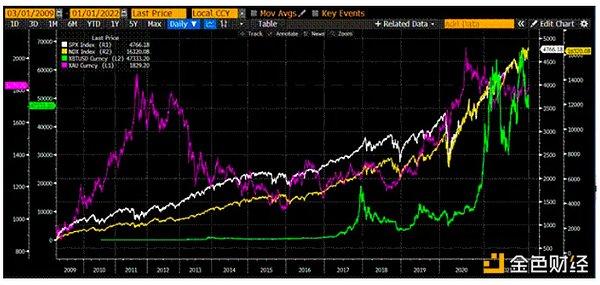Author: Cookie
Original Source: Rhythm BlockBeats
In March of this year, @domodata launched an innovative experiment "BRC-20" based on the Ordinals protocol. The experiment aims to test whether the Ordinals protocol can promote the "substitutability" of Bitcoin, that is, to achieve the effect of issuing ERC-20 tokens on the Ethereum network through the Ordinals protocol on the Bitcoin network.
BRC-20 makes the Bitcoin network crazy again. On March 9, more than 30,000 "inscriptions" were minted, of which the number of text type "inscriptions" was close to 27,000.

Let's take a look at how the BRC-20 token works.
Deploy deployment
Use the Ordinals protocol to burn the text shown in the figure below to deploy BRC-20 tokens:

The meaning of each keyword is as follows:

"p": protocol type. A keyword that must be included, which defines the operation based on the BRC-20 protocol, and helps other systems to identify and process BRC-20 events.
"op": event type. A keyword that must be included, which defines the type of event, whether it is a Deploy deployment, a Mint casting, or a Transfer transfer.
"tick": BRC-20 token identifier. A keyword that must be included, which defines the name of the BRC-20 token and consists of 4 letters.
"max": maximum supply. A mandatory keyword that defines the maximum supply of BRC-20 tokens.
"lim": The maximum number of BRC-20 tokens that a single inscription can hold. A keyword that is not required to be included. This keyword defines how many BRC-20 tokens the user can get at most by casting an inscription. If this is set to 1000, a maximum of 1000 BRC-20 tokens can be obtained by minting a single inscription.
"dec": Decimal precision. A keyword that is not required to be included. This keyword defines the decimal precision of the BRC-20 token. The default setting is 18.
The data on Dune shows that three BRC-20 tokens, $ordi, $meme and $punk, have been successfully deployed.
Mint casting
Use the Ordinals protocol to burn the text shown below to mint BRC-20 tokens:

The meaning of each keyword is as follows:

"p": protocol type. A keyword that must be included, which defines the operation based on the BRC-20 protocol, and helps other systems to identify and process BRC-20 events.
"op": event type. A keyword that must be included, which defines the type of event, whether it is a Deploy deployment, a Mint casting, or a Transfer transfer.
"tick": BRC-20 token identifier. A keyword that must be included, which defines the name of the BRC-20 token and consists of 4 letters. Here the content of "tick" is "ordi" which means the minted BRC-20 token is $ordi.
"amt": The number of BRC-20 tokens minted. A keyword that must be included that defines how many BRC-20 tokens a single inscription minted will be equal to, given that the value of this keyword must be less than the "lim" value deployed by that BRC-20 token. For example, if the "lim" value deployed by ordi is 1000, then this keyword can be given any value within the range of 1-1000 when casting an inscription, and usually gives 1000 to fill up the number of ordi that can be obtained by casting a single inscription.
Transfer
Use the Ordinals protocol to burn the text shown below to transfer BRC-20 tokens:

The meaning of each keyword is as follows:

"p": protocol type. A keyword that must be included, which defines the operation based on the BRC-20 protocol, and helps other systems to identify and process BRC-20 events.
"op": event type. A keyword that must be included, which defines the type of event, whether it is a Deploy deployment, a Mint casting, or a Transfer transfer. Here, the content of "op" is "transfer", which means the event type is transfer.
"tick": BRC-20 token identifier. A keyword that must be included, which defines the name of the BRC-20 token and consists of 4 letters. Here, the content of "tick" is "ordi", which means that the transferred BRC-20 token is $ordi.
"amt": the amount of BRC-20 tokens transferred. A mandatory keyword that defines how many BRC-20 tokens will be transferred.
"to": transfer target. An optional keyword that defines the address of the transfer recipient. If this is left blank, the default recipient address is correct. Currently, this keyword is only intended to be used for the data tracking test of the Dune Kanban.
"fee": transfer fee. A keyword that is not required to be included, which defines the amount of the transfer fee. Currently, this keyword is only intended to be used for data tracking testing of the Dune Kanban (without Taproot data).
first come first served rule
Whether it is Deploy deployment, Mint minting or Transfer transfer, it follows the first-come, first-served rule.
For Deploy deployment, if a BRC-20 token with the same name is deployed, the first deployed one is considered the only successful deployment.
For Mint casting, all Mint exceeding the total amount will be considered invalid, and the validity is based on the time sequence of Mint success, "first come, first served".
For Transfer transfer, if two transfer events occur in the same block, the event with higher fee will be given priority.
$ordi casting situation
$ordi is the first BRC-20 token to be deployed. Through UniSat's BRC-20 search function, it can be seen that there are already 23161 inscriptions related to the casting of $ordi.

Assuming that the "amt" values of these 23161 inscriptions are all set to 1000, then recasting $ordi at this time will be considered invalid, because the total amount of $ordi is set to 21 million indivual.

If you are minting through Mint Bot, you should pay special attention to whether Mint Bot mints the inscriptions to your own address first and then transfers them to you, or uses your address as the receiving address when minting. If it is "mint the inscription to your own address first and then transfer it", this situation is cheated, because the balance is still hung under the Mint Bot address, as long as Mint Bot mints another Transfer inscription, the balance can be used up. You can check the Genesis Transaction of your own Mint inscription on the Ordinals browser (whether it is directly output to your own address).
Also note that Mint inscriptions do not imply ownership of balances . That is to say, it is wrong to directly buy Mint inscriptions in the secondary market to obtain $ordi. The current balance address must be minted with Transfer inscriptions to transfer $ordi.
How about Mint BRC-20 tokens?
Bulk Mint can be implemented very smoothly with UniSat .
First, enter the page and select "BRC-20".

The subsequent settings are also very simple:

Fill in the BRC-20 token name of Mint in the "Tick" column. In the "Amount" column, fill in the number of tokens contained in each inscription (for example, $ordi The highest value set during deployment is 1000, so fill in 1000 here). The "Repeat Mint" at the bottom sets the number of batches of Mint. (Note: As mentioned above $ordi has been completed with a high probability of all Mint. The above picture is only for example, don’t take the risk of invalid Mint at this time)
Click "Next" to confirm that the content of Mint is correct:

Then click "Next" and fill in the bitcoin address for receiving in the red box. At the same time, you can also choose the gas fee level. If you want to complete Mint the fastest, choose "Custom".

Then click "Submit & Pay invoice" to enter the payment window:

The payment address is displayed under "Copy address below", and the payment amount is displayed in "Total Amount". Use your own bitcoin wallet to complete the transfer and wait for the inscription to arrive.

However, the inscription produced by UniSat Mint is only 546 Satoshi. Community users are worried that the inscription will be lost due to insufficient Satoshi reserved for Gas during Transfer.

In this regard, the official reply on Discord is "Additional fees can be added to the wallet to support transfers."

epilogue
You may think, what is the point of trying to do this kind of ERC-20 token on Bitcoin? The smart contract is still a money printing machine for ERC-20 tokens, actually creating new tokens. What is the difference between this BRC-20 and writing my own name on a banknote and naming this banknote "My Coin"?
This is precisely the charm of the Ordinals protocol. The significance of the Ordinals protocol is far greater than bringing the so-called "Bitcoin NFT" itself-it gives all Bitcoin enthusiasts the ability to freely give Bitcoin new meaning. Some people think that Bitcoin can be an "art carrier", and some people think that Bitcoin can be a "mint"... Everyone's different understanding will cause each Satoshi to be burned with different content, which is the seed of Bitcoin's value diversity.
@domodata refers to himself as an "experimenter". He thanked everyone for their love for the "experiment" of BRC-20, and advised everyone not to waste a lot of money on Mint, Salute.

More and more "experimenters" are thinking about what can be done through the Ordinals protocol, and there are new things every day. The Ordinals protocol is bringing Bitcoin's value diversity exploration into the "minesweeping stage"...

Comparing the Ordinals protocol to a game development tool, we only developed to "minesweeping". What will it develop into later on?
(The above content is excerpted and reprinted with the authorization of our partner MarsBit , link to the original text | Source: Rhythm BlockBeats )
Disclaimer: The article only represents the author's personal views and opinions, and does not represent the objective views and positions of the block. All content and opinions are for reference only and do not constitute investment advice. Investors should make their own decisions and transactions, and the author and blockers will not bear any responsibility for the direct and indirect losses caused by investor transactions.






